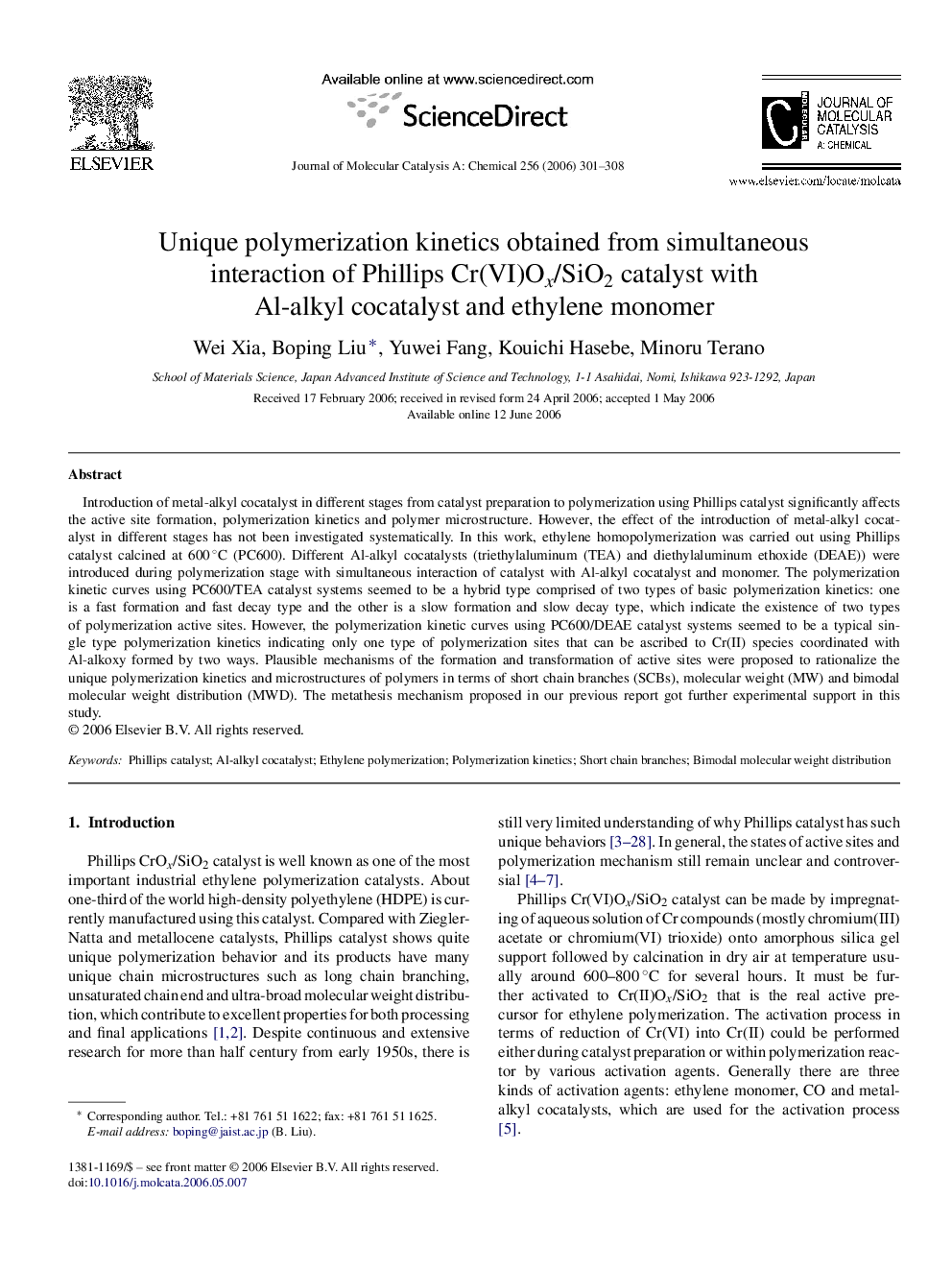| Article ID | Journal | Published Year | Pages | File Type |
|---|---|---|---|---|
| 68629 | Journal of Molecular Catalysis A: Chemical | 2006 | 8 Pages |
Introduction of metal-alkyl cocatalyst in different stages from catalyst preparation to polymerization using Phillips catalyst significantly affects the active site formation, polymerization kinetics and polymer microstructure. However, the effect of the introduction of metal-alkyl cocatalyst in different stages has not been investigated systematically. In this work, ethylene homopolymerization was carried out using Phillips catalyst calcined at 600 °C (PC600). Different Al-alkyl cocatalysts (triethylaluminum (TEA) and diethylaluminum ethoxide (DEAE)) were introduced during polymerization stage with simultaneous interaction of catalyst with Al-alkyl cocatalyst and monomer. The polymerization kinetic curves using PC600/TEA catalyst systems seemed to be a hybrid type comprised of two types of basic polymerization kinetics: one is a fast formation and fast decay type and the other is a slow formation and slow decay type, which indicate the existence of two types of polymerization active sites. However, the polymerization kinetic curves using PC600/DEAE catalyst systems seemed to be a typical single type polymerization kinetics indicating only one type of polymerization sites that can be ascribed to Cr(II) species coordinated with Al-alkoxy formed by two ways. Plausible mechanisms of the formation and transformation of active sites were proposed to rationalize the unique polymerization kinetics and microstructures of polymers in terms of short chain branches (SCBs), molecular weight (MW) and bimodal molecular weight distribution (MWD). The metathesis mechanism proposed in our previous report got further experimental support in this study.
Graphical abstractEthylene polymerization was carried out using Phillips Cr(VI)Ox/SiO2 catalyst with simultaneous interaction of the catalyst with Al-alkyl cocatalyst and monomer. Completely different polymerization kinetics was found compared with that of the same catalyst pre-modified by Al-alkyl cocatalyst during catalyst preparation stage. Plausible mechanisms of formation of active sites were proposed in Schemes 1 and 2. Figure optionsDownload full-size imageDownload as PowerPoint slide
